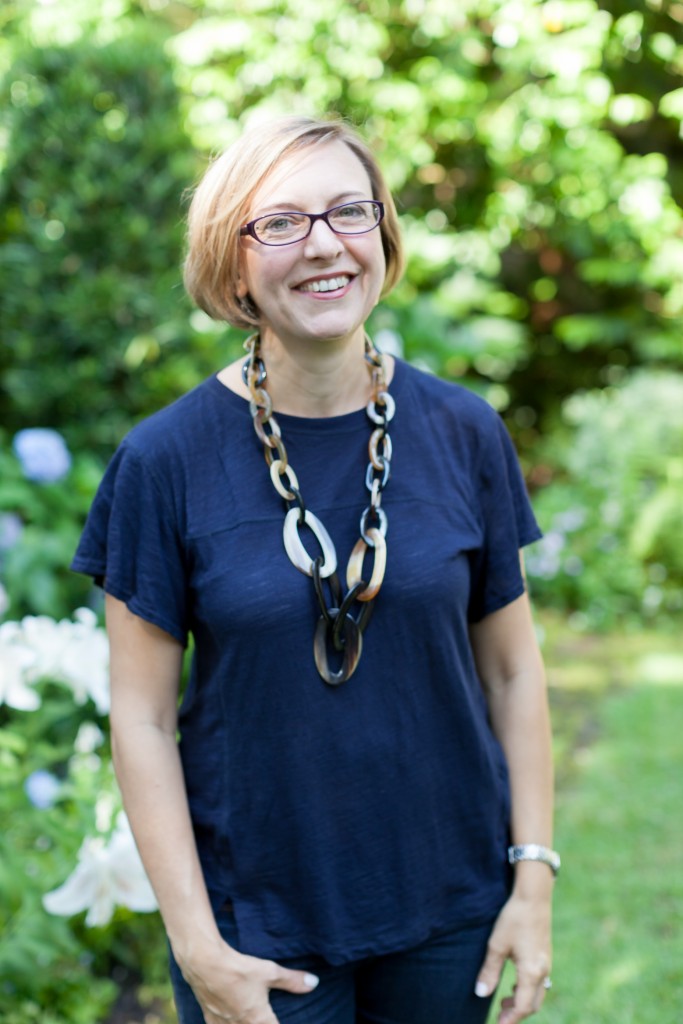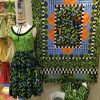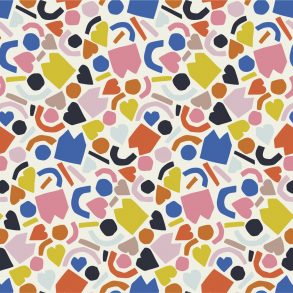Each month we welcome a guest expert into the Textile Design Lab to share an exclusive training with our members. This is such a vast industry, covering so many markets and specialties, and we love hearing from various experts and learning from their years of experience.
This month we are thrilled to welcome Heather Powers, a talented rug designer and creative organizer. We can’t wait to share Heather’s guest expert training later this month in the Lab (join here to gain access!), but today we invite you to learn more about this inspiring designer in the interview below. Enjoy!
 1. Please tell us a bit about your design background and career path. What drew you to the world of textile design and designing for the rug/carpet industry in particular? What are you doing nowadays?
1. Please tell us a bit about your design background and career path. What drew you to the world of textile design and designing for the rug/carpet industry in particular? What are you doing nowadays?
I was always a creative child, drawing and painting and creating my own fantasy “worlds” with my dollhouse. My mom and I made clothes and furniture for my dolls together and I later began to sew on my own, making clothing etc. After exploring many aspects of art for an Associate’s degree in Studio Art, I finally narrowed down my interest to fibers and textiles. I attended the Savannah College of Art and Design and got my BFA in Fibers. Shortly after sitting down at a loom to weave, I knew I wanted to go into the industry and pursue woven textile design. I was so intrigued by the use of both my left and right brain, all the planning and numbers required for woven design and then the freedom and tactile exploration that happens at the loom. After college I had the opportunity to work at one of the oldest and most prestigious weaving mill’s in America, Churchill Weavers (now closed). This opportunity gave me the chance to both design textiles and see them manufactured under one roof. I feel strongly that there should be a connection between what we design and how it is used, both form and function are essential to great design! Having the chance to see how things are manufactured helps us to become better designers. From Churchill I made the leap to larger Jacquard woven design at Mohawk Industries. This helped me make the transition to working with CAD design (at SCAD we were still creating gouache renderings for our designs and CAD design was just beginning to be taught). There is nothing wrong with taking a job that will teach you new skills and keep you at the cutting edge of technology! That was my approach and as I mastered my craft as a designer, I learned to turn my skills to other applications, including rug and carpet design. I finally made the transition to carpets at Tai Ping, designing for both woven and hand tufted rugs and carpets for residential and hospitality customers. This was a really fun and exciting transition. Ultimately, because I understood the process of manufacturing, I was more easily able to transition from one type of product (woven textiles to woven carpet) more easily. I’m no longer designing carpet or textiles (except for what I weave or dye myself), but the skills I gained as a designer and project manager are still used daily in my business as a Professional Organizer and Creativity Coach.
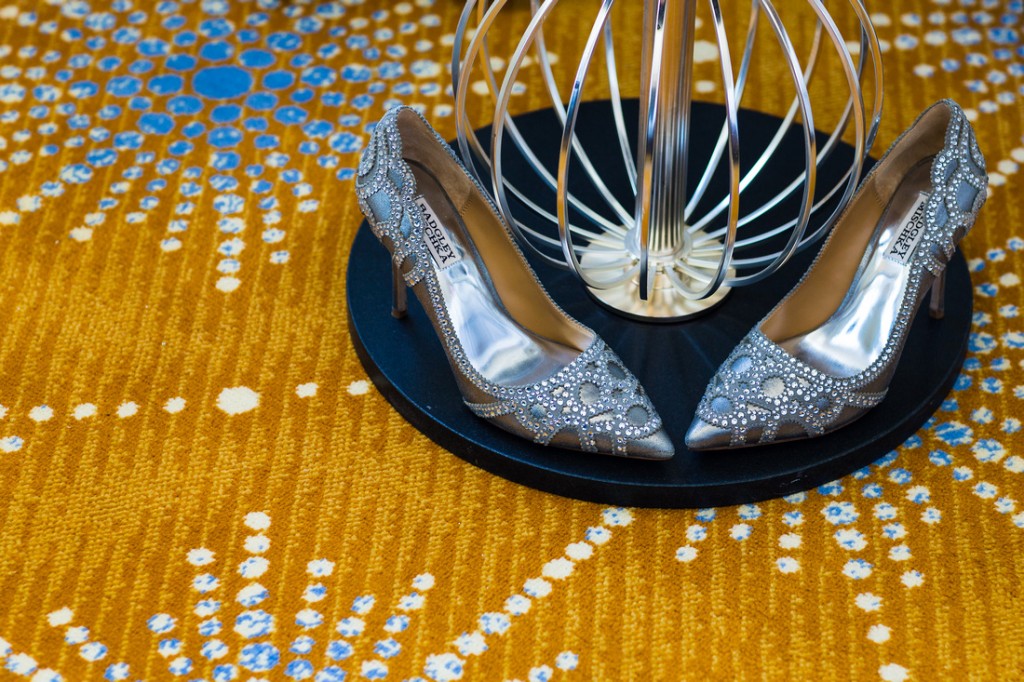
2. Can you tell us a bit about your past position project managing carpet designs for Marriott? What did your responsibilities include? What were your favorite parts of your job?
The process of designing for projects at Tai Ping was one that required the designer to manage the project, including administrative duties, ordering samples, corresponding with the designers and sales personnel, picking and color matching, and being able to take a design from concept to digital rendering with scaled mockup’s for client approval. Designing woven carpet is different than other (print) textiles in that the aspect ratio is not square (your pixel ratio may be 7×9 or 10 pixels per inch or ppi). When I transitioned to carpet design there was terminology I had to learn and new software (Texcelle) as well as keeping up with the advances in manufacturing and installation that allowed us to work off of architectural renderings to create entire spaces that were installed to fit together like a puzzle (called Electronic Jacquard). Some designers do not love the administrative aspect of their job but I loved it and ultimately, those skills serve me extremely well today as a small business owner. Because of my skills in communication and understanding of manufacturing I was selected to visit company mills in both China and Thailand. This cultural opportunity was both eye opening and life changing and I was able to spend a month in S.E. Asia to better understand our workflow process. The purpose of this trip was to help set up a “remote” design studio so that overflow projects that our in house US designers could not take on could be sent to this design group. In my final 5 years at Tai Ping, I worked directly with Marriott Headquarters and had the opportunity to collaborate with Interior Designers on stunning global projects. I loved the process of taking an idea from sketches and reference materials to carpets installed in entire ballrooms or other spaces.
3. What do you feel makes a successful design for a rug or carpet, or what considerations do you keep in mind when designing for this market? Are there any inherent pitfalls to avoid?
Great communication is essential to creating beautifully designed products. Sometimes as designers we have to read between the lines and understand the customer beyond the words or visual references they share with us. We have to also be willing to put our ego’s aside and do what is right for the project or product to shine (because our names rarely end up in neon!). Beyond that, having the ability to think about how space can be defined by the patterns in a carpet is essential and great interior designers know how to help execute this in the design process. The next time you go into any room, look at the flooring and think about how the colors, shape and size create boundaries or open the space up. I think scale is also the other factor that is really critical for carpet design and this can be a pitfall for someone making the transition into carpet from other textile products. There are some areas that require large, bold patterns and other areas that should be less obvious and use more subtle, small patterns. In carpet speak, these areas use to be defined by “Infill”-the center, more bold area of a carpet, “Border” and “outfill”, the smaller scale pattern between “rugs”. But, with the more frequent use of Electronic Jacquard design (pieced together as one custom design on site) these boundaries are more blurred. Designs can contain many different scales and shapes or elements to define space without traditional borders etc.
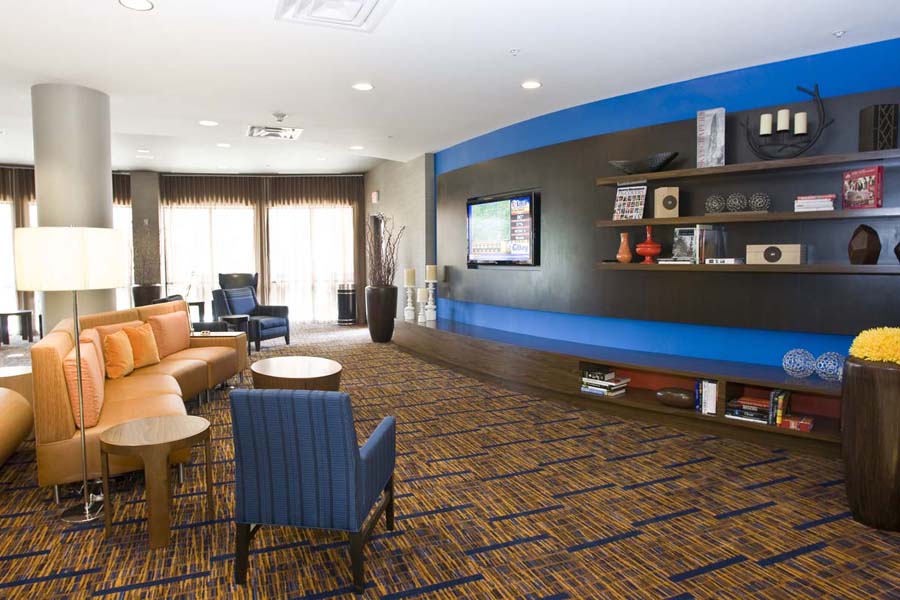
4. What roles did trends play in your design process as a carpet designer? What are your current favorite print and pattern trends for rugs & carpets?
Interior trends were critical to carpet design but not as much so as they are in residential interior design. Tai Ping (and other companies) would create several collections a year based on the latest color and design trends and though we didn’t always sell these designs “off the shelf”, these collections set our company apart from competitors because they created a brand identity around our interpretation of trends. Being able to interpret a trend into different products effectively is a skill that requires subtle interpretation at times. The chances are that if tropical fruit is all the rage in residential design, it may not apply to a longer cycling market like hospitality. So when it comes to trends it is vital to understand how cyclical the market and company you are working with are. Some industries cycle faster (fashion and residential, stationary and gift) but commercial and hospitality design are not changed out as frequently and designs need to be more long lasting but have a fresh interpretation. We created a lot of designs that had traditional elements and I’d say the term transitional would be the most popular in carpet and rug design…not too traditional or too trendy. Some of my all time favorite patterns for rugs and carpets are organic elements, especially when they are quite life like…water, wood grains and vegetation or florals but in larger than life scale or non-realistic colors.
5. What are your go-to sources for design inspiration? Any books, websites, design tools, or other resources you would recommend?
When I was designing full time I would cycle through a ton of online and print resources for inspiration including Design Sponge, Apartment Therapy, tons of interior design magazines, industry publications like Hali Rug/Modern Carpet & Textiles, Cover Magazine, Rug News & Design, the Surface Design Association, Print & Pattern, Pattern People, Pinterest and more. I’d also follow color forecasters like Pantone and Color Marketing Group. I attended Surtex many times as well as other trade shows including ITMA-Showtime, ICFF, NeoCon & HD Expo. If you are thinking about designing for the carpet and rug industry, start reading and looking at top manufactures as well, any of the trade publications will lead you to the many manufactures and design companies.
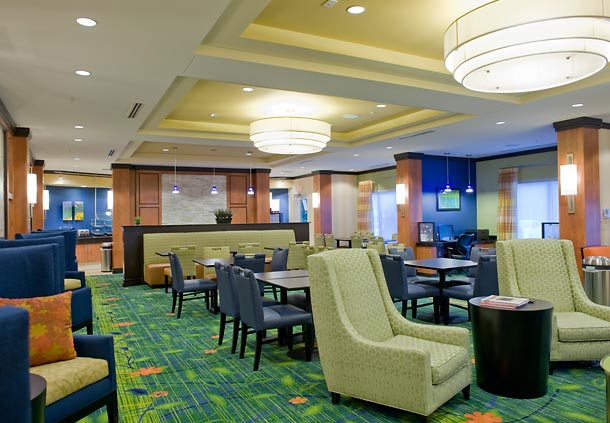
6. Who are your design heroes (past or present)? What about them inspires you or influences your work?
Annie Albers and Jack Lenore Larson are two of my favorite past designers because of their fundamental understanding of form and function. They knew how to create a great design on paper and how to execute that design as a beautifully manufactured product. So many times, things get lost in translations and having a foundational understanding of the end product and process really shows in the finished product! A couple of my favorite current day designers are Caroline Friedlander and Amy Butler, for basically the same reasons as Annie and Jack. And now that I’m thinking about this, I’m realizing that all of these designers are also entrepreneur’s paving the way by setting trends but being true to their own creative vision.
7. What would you consider to be your most proud achievement(s) or greatest success(es) so far in your design career? What are your goals for the future?
Being selected to work at Churchill Weavers was an exclusive privilege because at that time, they were one of the last high end weaving mill’s remaining in America. Not only did I get to help expand their designs to use Dobby looms but I worked side by side with the President of the company to learn the entire design and manufacturing process as well as help to design showrooms and attend trade shows domestically and internationally. Having this kind of ‘big picture experience’ and working with exquisitely crafted products early in my career set the bar high and kept me striving to work with the best designers and manufactures through my career. While at Tai Ping, setting up a successful remote design studio in Thailand, getting to travel to the mills there and work first hand with these designers and return to the US to continue a more productive working relationship was extremely rewarding! Being selected to work with Marriott headquarters at a time that the market was really exploding and helping to build the relationship with this brand was also very exciting. Ultimately I can think back on a handful of projects I LOVED designing, the reason I loved them is that I loved the collaborative process of working with the others on the team and that working relationship shined through in the end products we created! The relationships we build in the process of designing products can be far more lasting than the products themselves! Since I am no longer working on designing carpets and rugs, my goals include working on projects that are rewarding because of the relationships I build and creating a beautiful end product (in this case a well organized home or small business) that brings joy to my clients and the people who live in these spaces!
8. What have been some of the challenges you have faced throughout your design career and how have you overcome them?
When I graduated from SCAD I said “I will never use a computer to design”, HA! The joke was on me because throughout my 15+ yr career, I had to work to keep up with technology and learn new skills and tools! As I mentioned earlier though, there is nothing wrong with working somewhere that will help expand your technical skills in a new direction. The carpet design software most commonly used is very expensive for a freelance designer so working in house was the best option for me for most of my career, even though I ultimately knew I wanted to be my own boss. As a “field designer” I was required to maintain the discipline of a 9-6 schedule on my own, which was not that challenging for me because I honestly had a tendency to overwork! So maintaining a good work/personal/creative life balance was/is really important. The other big challenge I found in the industry was a lack of mentor’s. There is no “trade association” for our industry of designers and it can be difficult to find others who will share tips, skills, tricks of the trade and insight. I had several wonderful mentor/bosses in my career and found lasting friendships with other designers who’s skill sets were different than mine. I knew I could turn to these friends and mentors when I hit a challenging time in my career to help talk me through it. I’m also going to just say that the carpet industry is dominated by men at the top and that can be a challenge! As a designer, we want to be creative but some of us want more (money, recognition, creative freedom etc) and I finally hit my “glass ceiling” decided that the best thing for me leave and start my own business since the only other option was to go into sales and/or management therefore leaving the creativity aside for the most part. Having my own business certainly gives me more freedom but of course the challenges of being self employed are not for everyone but was absolutely the right choice for me.
9. What advice have you received in your career that has stayed with you or influenced you? Do you have any words of wisdom for aspiring designers trying to build successful careers of their own? Any advice for designers hoping to break into the carpet industry in particular?
I can’t emphasize the importance of finding mentors enough. I had a couple in college who really helped me clarify what direction I wanted to take my career and that foundation helped me to take the steps that helped me to grow both creatively and technically. The industry and your opportunities will always be in flux, so staying true to what you know you are best at while striving to increase your skills (taking classes, taking on projects that are a bit of a reach but not out of your ballpark etc) is really essential. I think the two qualities that serve me well are my curiosity and my versatility, I was able to work on a variety of different looks but still remain true to my skills. Looking back it’s really easy for me to see the path that led me to where I am today, hindsight 20/20 etc…but honestly I was very intentional about my career choices and was clear about the kind of products and companies I wanted to work for. Ultimately, my values led me to design products that were lasting quality. My best advice is to learn to follow your instinct, if you are designing for a products you can never imagine using you have to ask yourself why. Is it to gain the experience or is there something else about the process you love? As designers we are very process oriented and sometimes we can overlook the outcome but ultimately doing what you love should go hand in hand with your why. Why are you designing what you are? I have finally realized that the relationship between the person and the product (or service) is what is most important for me.
You can learn more about Heather Powers on her website: http://hkpowerstudio.com


